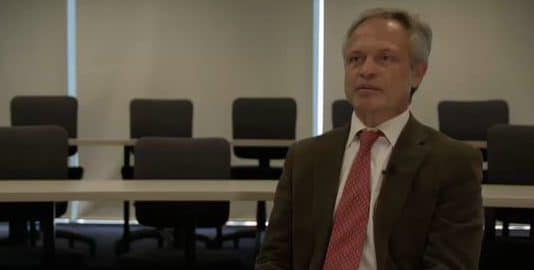Traditional methods of teaching via pure theory have dominated the educational landscape for generations, but technological advancements have disrupted not just how we do things, but also how we process information and learn. That is, there are now significant drawbacks of traditional teaching methods negatively affecting students’ learning.
Identifiable limitations of traditional/theory based education include:
1. Lack of theory connecting to real world application;
2. Dry nature of theory disengaging the fast-paced learner of today;
3. Lessons being viewed as an object to be passed on;
4. Little opportunity to experiment with theory;
5. Limited ability to reflect, observe and act.
Business scholars have long contended that the acquisition of theory by students is not a sufficient learning outcome. Rather, it is the application of this theory through direct experience that leads to the development of crucial management competencies such as interpersonal skills; critical thinking, workplace readiness and professional confidence. Methods in which direct experience is gained has evolved with the rise of technology and web 2.0. Today we use technology and the internet to entertain ourselves, as well as improving productivity. It is posited that as the current generation joins the workforce, the demand for e-learning will continue to increase as managers are increasingly referring to technology for solutions.
It can be argued that today’s business is very complex, requiring sophisticated skills; and that experience based learning is very productive in teaching business students. The Association to Advance Collegiate Schools of Business (AACSB International) founded in 1916, has long identified the value of experiential learning.
Why is experiential learning considered a huge leap forward in engaging the students of today? Experiential learning is described as an “outward-facing curricula and experiential education can create the critical intersection between classroom and business learning that keeps faculty and students connected to rapidly changing business models” . More than just informing students, their ability to critically and actively engage in research must be triggered through experience. This will lead to students using personal skills and tacit skills for their own knowledge creation.
While theory is necessary to create a base of knowledge, practical application is required to test a student’s understanding and experience these concepts at a deeper level while facilitating learning outcomes which they can take into the workplace.
Importantly, the Control-Value theory suggests that achievement emotions affect cognitive abilities, learning strategies, motivation, and self-regulation. Positive emotions allow students to enjoy themselves while learning, and peak their interest in developing professionally. Achieving positive emotions associated to learning can be difficult in traditional teaching methods. In stark contrast to positive emotions, the negative counterpart hinder the learning experience. Emotional responses like anxiety, frustration, shame or anger stunt desires to learn. However, it can also be argued that experiencing negative emotions can actually motivate students to perform better. Self-policing a controlled response to negative outcomes and emotions, students can accept that failure while difficult, is an opportunity to update tactics and strategies, to ultimately achieve success.
Experiential learning tools like business simulations give students the opportunity to experience the relevance of their learnt subject matter first-hand. Giving students more control and responsibility for their own learning can enhance their ability to learn from past experience. This is where simulation based learning become essential. Experiential Learning focuses on the learning process for the individual, through observation and interaction with the subject they are learning about rather than the traditional process of learning from a textbook. This also somewhat releases individuals from the burden of winning at the end of the game, to instead experience adaptive decision making as is often required in real-life situations. Simulations have flexible learning environments – different things can be learnt from the same game, and different participants can learn different things.
A good business simulation will allow students to:
1. Apply theory in a real-world setting. Allowing them to bridge the gap between learning and decision-making.
2. Engage in a challenging environment. To survive and succeed, they need to adapt and improve to changing conditions relating to their products, the competition, and the market as a whole.
3. Retain knowledge and develop skills. Absorb the lessons learnt to identify the actual consequences of decisions in the real world.
Business simulations bring practical reality and excitement to the classroom. Students obtain a vicarious exposure to the problems faced by real management teams. They gain immediate, concrete experiences, providing a base for their own observations and reflections in an environment that fosters positive attitudes toward learning.
– By Danny Master, Ian McPherson and Brook McFarlane
Ettinger, A., Holton, V., & Blass, E. (2006). E-learner experiences: what is the future for e-learning? Industrial and Commercial Training, 38(4), 208 – 212.
Finch, D., Peacock, M., Lazdowski, D., & Hwang, M., (2014). Managing emotions: A case study exploring the relationship between experiential learning, emotions, and student performance. The International Journal of Management Education, 13, 23 – 36.
Haro, S., & Turgut, G., (2012). Expanded strategy simulations: Developing better managers. Journal of Management Development, 31(3), 209 – 220.
Kolb, A., Kolb, D., (2005). Learning Styles and Learning Spaces: Enhancing Experiential Learning in Higher Education. Academy of Management Learning and Education, 4(2), 193 – 212.
